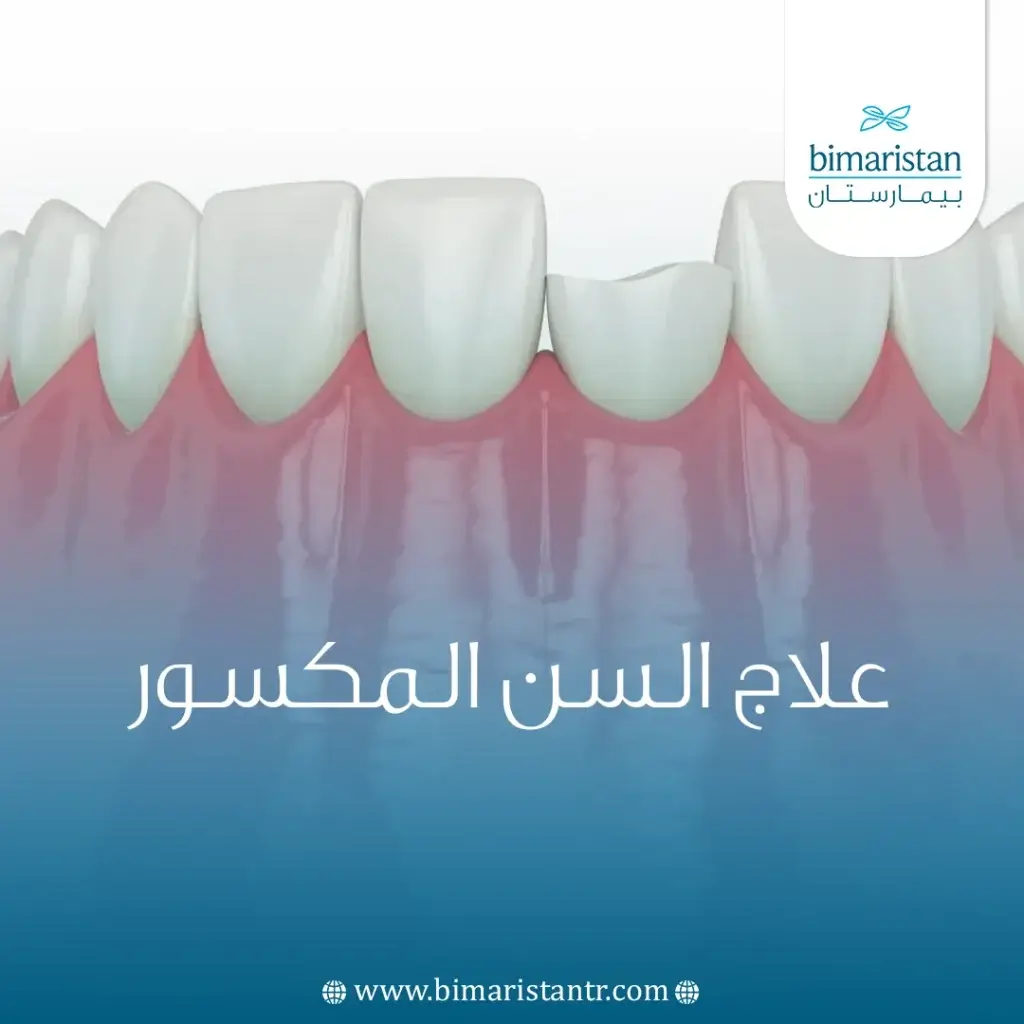علاج السن المكسور بالوقت المناسب وبالطريقة الصحيحة يعد مهماً لإنقاذه والحفاظ عليه، هناك طرق عديدة لعلاج الأسنان المكسورة المتوفرة في تركيا يمكنك التعرف عليها.
تحدث الكُسور عندما يظهر تصدع في السن، يمكن أن يكون الكسر في بعض الأحيان صغيراً وغير ضار وفي أوقات أخرى يمكن أن يتسبب في انشطار السن أو انقسامه.
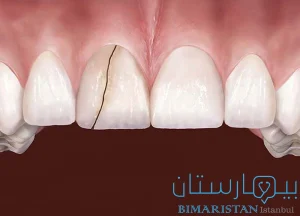
ممكن أن يحدث الكسر عند أي شخص ولكنه يعتبر أكثر شيوعاً عند الأطفال والكبار في السن، إذا كنت تشك في وجود أسنان مكسورة استشر أخصائي طب الأسنان على الفور.
ما هو الجزء الذي يمكن أن ينكسر ويتصدع من السن؟
تتكون الأسنان من الأجزاء التالية:
- التاج وهو الجزء المرئي فوق اللثة
- الجذر يقع تحت اللثة
يتكون كل من التاج والجذر من عدة طبقات:
- الميناء: السطح الخارجي الصلب.
- العاج: الطبقة الوسطى.
- اللّب: نسيج داخلي رقيق يحتوي على أوعية دموية وأعصاب.
يمكن أن تؤثر كسور الأسنان على بعض أو كل هذه الطبقات ويعتمد علاج السن المكسور على مكان حدوث الانكسار وشدته.
بعض الكسُور لا تسبب أي أعراض بينما يسبب بعضها الآخر الألم أو الشعور بالحساسية، علاج السن المكسور بشكل سريع يزيد من فرص الحفاظ على السن.
أسباب كسور الأسنان
الأسباب الأكثر شيوعاً للأسنان المكسورة هي:
- العمر تحدث العديد من تشققات الأسنان في سن 50 وما فوق.
- قضم الأطعمة القاسية مثل الحلوى أو الثلج أو حبات الفشار يسبب كسر الضرس.
- العادات مثل مضغ العلكة والثلج.
- حشوات أسنان كبيرة أو حشو قناة جذر تضعف السن.
- صرير الأسنان.
- الصدمة بما في ذلك السقوط أو الإصابة الرياضية أو حادث الدراجة أو حادث السيارة أو ضربه قويه أو العنف الجسدي.
ما هي المنطقة الأكثر عرضة للكسر؟
يحدث الكسر غالباً في الأسنان الأمامية العلوية والأسنان الخلفية من الفك السفلي (الأضراس السفلية)، على الرغم من أن الناس عادة ما يكسرون سناً واحداً إلا أن الإصابات الشديدة أو الصدمة قد تؤدي إلى كسر عدة أسنان.
بالإضافة لذلك فإن الأشخاص الذين يعانون من نخر اﻷﺳﻨﺎن أكثر عرضة للإصابة بالأسنان المكسورة فحتى مع الإصابات الخفيفة قد يحدث لديهم كسر.
أعراض السن المكسور
لا يسبب السن المكسور أعراضاً دائماً، عندما يحدث ذلك قد تشمل أعراض الحالة الرئيسية ما يلي:
- ألم يأتي ويختفي خاصة عند المضغ.
- الحساسية لتغيرات درجة الحرارة أو تناول الأطعمة الحلوة.
- تورم حول الاسنان المكسورة.
- وجع الاسنان عند العض أو المضغ.
كيف يتم تشخيص السن المكسور؟
لتشخيص الاسنان المكسورة سيسأل الطبيب عن الأعراض التي يعاني منها الشخص و تحديد السبب المحتمل الذي تسبب في السن المكسور سواء بسبب صدمة أو أنه تعرض إلى حادث.
لإجراء تقييم شامل يقوم الطبيب بأخذ التاريخ الطبي للأسنان وما إذا كان المصاب يطحن أسنانه أو يمضغ الثلج أو الأطعمة الصلبة وبعد ذلك سيقوم بما يلي:
- التحقق لمعرفة ما إذا كان السن مكسوراً أو مخلوعاً.
- الفحص على العض ليرى في حال كان الشعور مؤلم.
- البحث عن خطوط الشقوق على اﻷﺳﻨﺎن.
- فحص اللثة بحثاً عن التهاب لأن الكسور العمودية قد تهيج اللثة.
- تمرير ضوء من خلال الأسنان لإلقاء الضوء على الكسر.
- تلطيخ الأسنان بصبغة لرؤية كسر الأسنان بشكل أفضل.
- أخذ أشعة سينية للأسنان لرؤية المقدار المتضرر والمشكلات ذات الصلة مثل فقدان العظام، قد يشمل التصوير كذلك مسحاً ثلاثي الأبعاد يسمى التصوير المقطعي المحوسب بالأشعة المخروطية والذي يمكن أن يُظهر فقدان العظام مما يشير إلى حدوث تكسر.
- استخدام أدوات خاصة لتحديد موقع الكسر من خلال التحقق مما إذا كانت الأدوات قد علقت في مكان الكسر.
ما هي أنواع كسور الأسنان؟
سيصنف نوع السن المشروخ ضمن إحدى الفئات الخمس التالية:
السن المكسور كسر عمودي
يمتد من السطح الإطباقي حتى اللثة، في بعض الأحيان يمتد الكسر إلى مستوى اللثة والجذر.
خطوط الشعر
تظهر شقوق صغيرة ورفيعة على طبقة الميناء الخارجية للسن لا تسبب أي شعور بالألم.
كسر الحدبة
يتشكل صدع حول حشوة الأسنان، عادةً لا تكون الحدبات المكسورة مؤلمة.
انشطار السن
يمتد الشق من سطح السن إلى ما تحت اللثة، يقسم هذا الكسر السن إلى قسمين.
الكسر الجذري العمودي
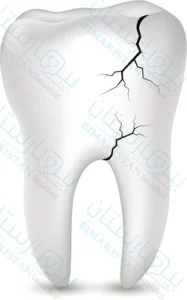
تبدأ التشققات من منطقة أسفل خط اللثة وتمتد نحو السطح الطاحن للسن، قد لا تسبب الكسور الجذرية العمودية أعراضاً ما لم يصاب السن بالعدوى.
علاج السن المكسور عند الطبيب
يعتمد علاج السن المكسور على مقدار الضرر الذي لحق بالسن، تشمل علاجات كسور الأسنان الشائعة أحد الخيارات:
علاج السن المكسور بالمادة الراتنجية الرابطة
تتم عملية ترميم السن المكسور بالراتنج البلاستيكي لملء الكسر.
التنعيم التجميلي
يؤدي برد الحافة الخشنة والتلميع لتنعيم الأسنان المكسورة.
التاج
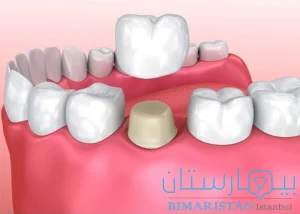
أو التلبيس يتم فيه صنع غطاء من الخزف أو السيراميك ووضعه فوق السن المكسور، غالباً ما يستخدم للوقاية من الكُسور العموديّة و الحالات التي لا يكون لديك فيها بنية سن كافية لقشرة الفينير.
خلع السن والزرع
يتم قلع السن بالكامل. التعويض عنه بالزرع وذلك عندما تظهر أضرار قوية على عصب وجذر السن.
علاج قناة الجذر
يتم في علاج قناة الجّذر إزالة العصب التالف ووضع حشو جذري مكانه، يستخدم عندما يمتد الكسر إلى اللب.
الوجوه التجميلية (الفينير)
قشرة الفينير عبارة عن طبقة رقيقة من الخزف أو الكومبوزيت تغطي مقدمة السن، غالباً ما تستخدم عند وجود كمية جيدة من بنية السن الطبيعي متبقية.
في بعض الأحيان قد يقترح طبيبك عدم علاج السن المكسور على الإطلاق، قد يكون هذا عندما يكون الكسر:
- لا يؤثر على مظهرك.
- لا يسبب ألماً.
- لا يمتد عميقاً جداً أو بعيداً مثل الشق الشعري.
هل يمكن علاج السن المكسور في المنزل؟
لا بالطبع ولكن هنالك خطوات مختلفة قد تخفف الأعراض قبل زيارة طبيب الأسنان من أجل علاج السن المكسور:
- عليك وضع كيس ثلج على الجزء الخارجي من فمك لمنع التورم.
- اشطف فمك بالماء المالح لتنظيف الاسنان.
- ويمكن تناول المسكنات غير الستيروئيدية المضادة للالتهابات عند الشعور بألم.
هل يمكن للسن المكسور أن يلتئم لوحده؟
لا، لا يمكن له أن يشفى لوحده لكن علاج السن المكسور قد ينقذ أسنانك، يمكن أن يقلل ترميم و اصلاح السن المكسور بسرعة من خطر التعرض لمزيد من الضرر والعدوى.
كم يستغرق علاج السن المكسور من وقت؟
قد يحتاج ترميم و علاج السن المكسور لعدة أسابيع أو شهور حسب حالة سنك، سيعطيك طبيب ك فكرة أفضل عن المدة التي قد تستغرقها معالجة الحالة.
على سبيل المثال:
التيجان: يمكن لطبيب أسنانك أحياناً عمل تاج في يوم واحد، لكنه غالباً ما يستغرق عدة مواعيد.
القلع: قد يستغرق استبدال السن بزرعة الأسنان شهوراً، ولكن مع تطور تقنيات الزرع في تركيا أصبح من الممكن القيام بعملية زرع سن في يوم واحد.
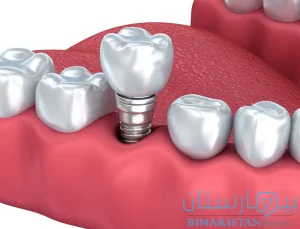
قشور الفينير: قد يستغرق صنع وجوه الفينير التجميلية من ثلاثة إلى أربعة أسابيع قبل أن يتمكن طبيب الأسنان من وضعها.
الوقاية من كسور الأسنان
لا يمكن منع كل كسر ولكن يمكنك تقليل خطر حدوثه باتباع ممارسات صحية عديدة:
- تجنب تناول الأطعمة القاسية أوالثلج.
- مارس العناية الجيدة بالصحة الفموية للأسنان واللثة.
- ارتدِ واقياً للفم إذا كنت تمارس الرياضة أو تضغط على أسنانك ليلاً.
- راجع طبيب أسنانك بانتظام لعلاج أي مشكلة، لا تتردد بالتواصل معنا وسنعرفك على أفضل الأخصائيين لدى مركز بيمارستان.
